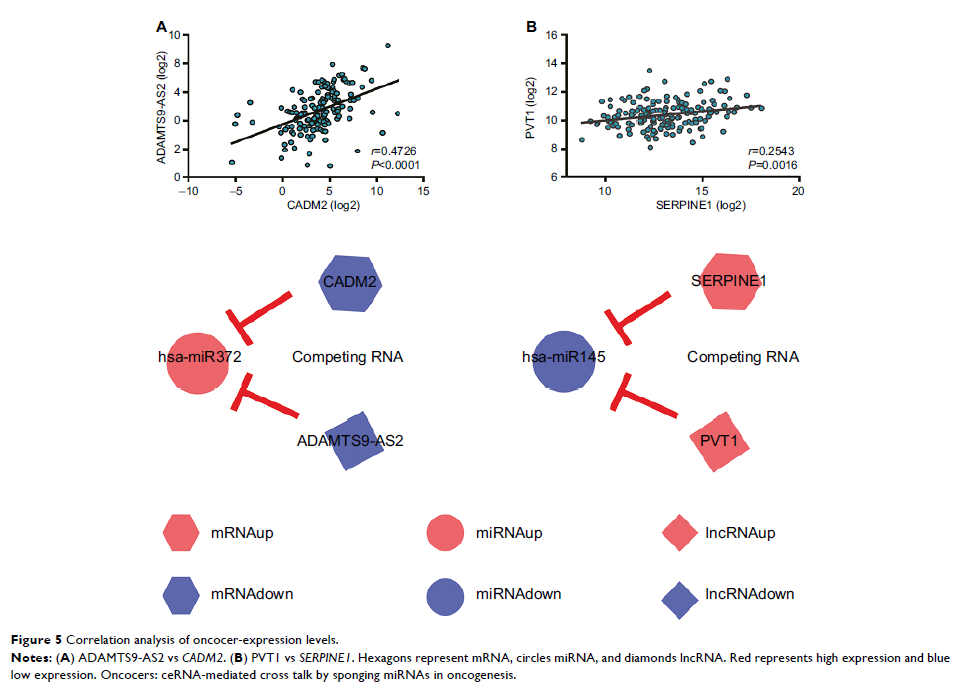9 0 9 6 8
论文已发表
注册即可获取德孚的最新动态
IF 收录期刊
- 2.6 Breast Cancer (Dove Med Press)
- 3.9 Clin Epidemiol
- 3.3 Cancer Manag Res
- 3.9 Infect Drug Resist
- 3.6 Clin Interv Aging
- 4.8 Drug Des Dev Ther
- 2.8 Int J Chronic Obstr
- 8.0 Int J Nanomed
- 2.3 Int J Women's Health
- 3.2 Neuropsych Dis Treat
- 4.0 OncoTargets Ther
- 2.2 Patient Prefer Adher
- 2.8 Ther Clin Risk Manag
- 2.7 J Pain Res
- 3.3 Diabet Metab Synd Ob
- 4.3 Psychol Res Behav Ma
- 3.4 Nat Sci Sleep
- 1.9 Pharmgenomics Pers Med
- 3.5 Risk Manag Healthc Policy
- 4.5 J Inflamm Res
- 2.3 Int J Gen Med
- 4.1 J Hepatocell Carcinoma
- 3.2 J Asthma Allergy
- 2.3 Clin Cosmet Investig Dermatol
- 3.3 J Multidiscip Healthc

基于 ceRNA 假说的新型 mRNA-lncRNA 串扰稳健性分析揭示了致癌机制并提高了食管癌的诊断准确性
Authors Chen LP, Wang H, Zhang Y, Chen QX, Lin TS, Liu ZQ, Zhou YY
Received 9 August 2018
Accepted for publication 21 November 2018
Published 27 December 2018 Volume 2019:11 Pages 347—358
DOI https://doi.org/10.2147/CMAR.S183310
Checked for plagiarism Yes
Review by Single-blind
Peer reviewers approved by Dr Andrew Yee
Peer reviewer comments 1
Editor who approved publication: Professor Nakshatri
Background: ceRNAs
have emerged as pivotal players in the regulation of gene expression and play a
crucial role in the physiology and development of various cancers.
Nevertheless, the function and underlying mechanisms of ceRNAs in esophageal
cancer (EC) are still largely unknown.
Methods: In this
study, profiles of DEmRNAs, DElncRNAs, and DEmiRNAs between normal and EC tumor
tissue samples were obtained from the Cancer Genome Atlas database using the
DESeq package in R by setting the adjusted P <0.05 and |log2(fold change)|>2
as the cutoff. The ceRNA network (ceRNet) was initially constructed to reveal
the interaction of these ceRNAs during carcinogenesis based on the
bioinformatics of miRcode, miRDB, miRTarBase, and TargetScan. Then, independent
microarray data of GSE6188, GSE89102, and GSE92396 and correlation analysis
were used to validate molecular biomarkers in the initial ceRNet. Finally, a
least absolute shrinkage and selection operator logistic regression model was
built using an oncogenic ceRNet to diagnose EC more accurately.
Results: We
successfully constructed an oncogenic ceRNet of EC, crosstalk of
hsa-miR372-centered CADM2 -ADAMTS9-AS2 and hsa-miR145-centered SERPINE1 -PVT1. In
addition, the risk-score model −0.0053*log2(CADM2 )+0.0168*log2(SERPINE1 )-0.0073*log2(ADAMTS9-AS2)+0.0905*log2(PVT1)+0.0047*log2(hsa-miR372)–0.0193*log2(hsa-miR145),
(log2[gene count]) could improve diagnosis of EC
with an AUC of 0.988.
Conclusion: We
identified two novel pairs of ceRNAs in EC and its role of diagnosis. The pairs
of hsa-miR372-centered CADM2 -ADAMTS9-AS2 and hsa-miR145-centered SERPINE1 -PVT1
were likely potential carcinogenic mechanisms of EC, and their joint detection
could improve diagnostic accuracy.
Keywords: competitive
endogenous RNA network, esophagus cancer, LASSO regression model, diagnosis
